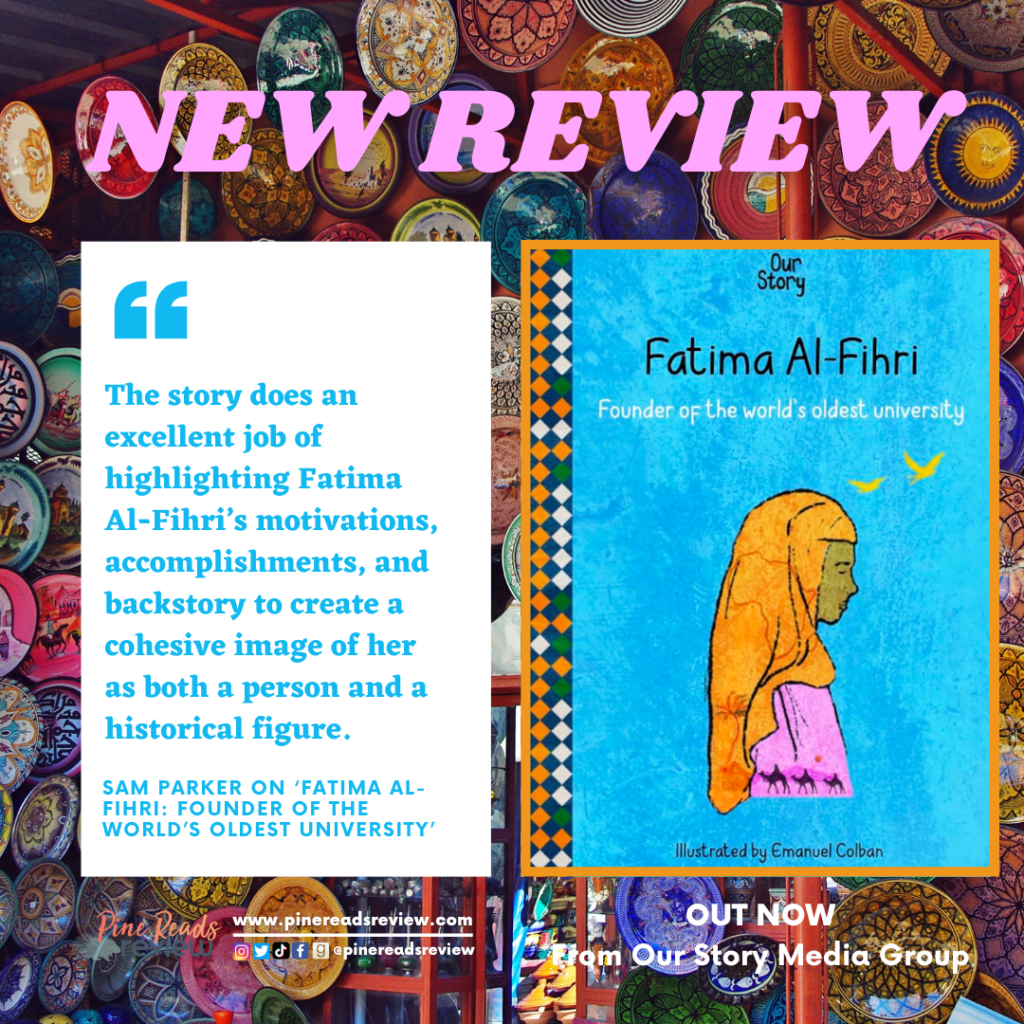
Out now from Our Story Media Group
About the Author: “The Our Story series strives to educate as many people as possible about the towering titans of the past and provide a new set of role models for future generations.
By showcasing the achievements of people from all over the world and initiating dialogue and immersive exercises, our goal is to create a more equitable society” (Bio from Our Story Media Group’s website).
Find Our Story Media Group on the following platforms:
Fatima Al-Fihri: Founder of the World’s Oldest University tells the story of a woman who founded the very first university in Morocco in 859 CE. Driven by a desire to serve her community and aided by an inherited fortune, Fatima Al-Fihri built a mosque named Al-Qarawiyyin as a tribute to the many migrants who had come to the city of Fes, Morocco. With a deep appreciation for the importance of education, Fatima hoped for the mosque to also be a place of learning. The University of Al-Qarawiyyin educated students in a range of subjects at no cost, and was the first university to offer degrees to students.
This book strikes a great balance between informational and engaging, translating complex historical subjects using a delivery style that young readers can understand and appreciate. I admired how the narrative seemed to cover the key elements of Fatima’s life story in appropriate detail without sacrificing some pieces for the sake of others. The story does an excellent job of highlighting Fatima Al-Fihri’s motivations, accomplishments, and backstory to create a cohesive image of her as both a person and a historical figure. The beautiful and vivid illustrations by Colban add life and context to the story. Alternating between text and imagery allows the illustrations to, at many points, drive the narrative and add another dimension of storytelling to the piece. Something else I appreciated about this story was that it went far beyond just telling young readers about Fatima Al-Fihri. The end of the book is rich with opportunities for reader engagement and further education. With discussion prompts, learning activities, a helpful glossary, and a pronunciation guide, the additions to this book demonstrate a commitment to increasing young readers’ understanding of Fatima Al-Fihri’s story. I would recommend this book to all educators and young readers as it calls attention to a lesser-known but incredibly important historical figure and offers great opportunities for readers to interact with her story.
Sam Parker, Pine Reads Review Writer & Social Media Manager